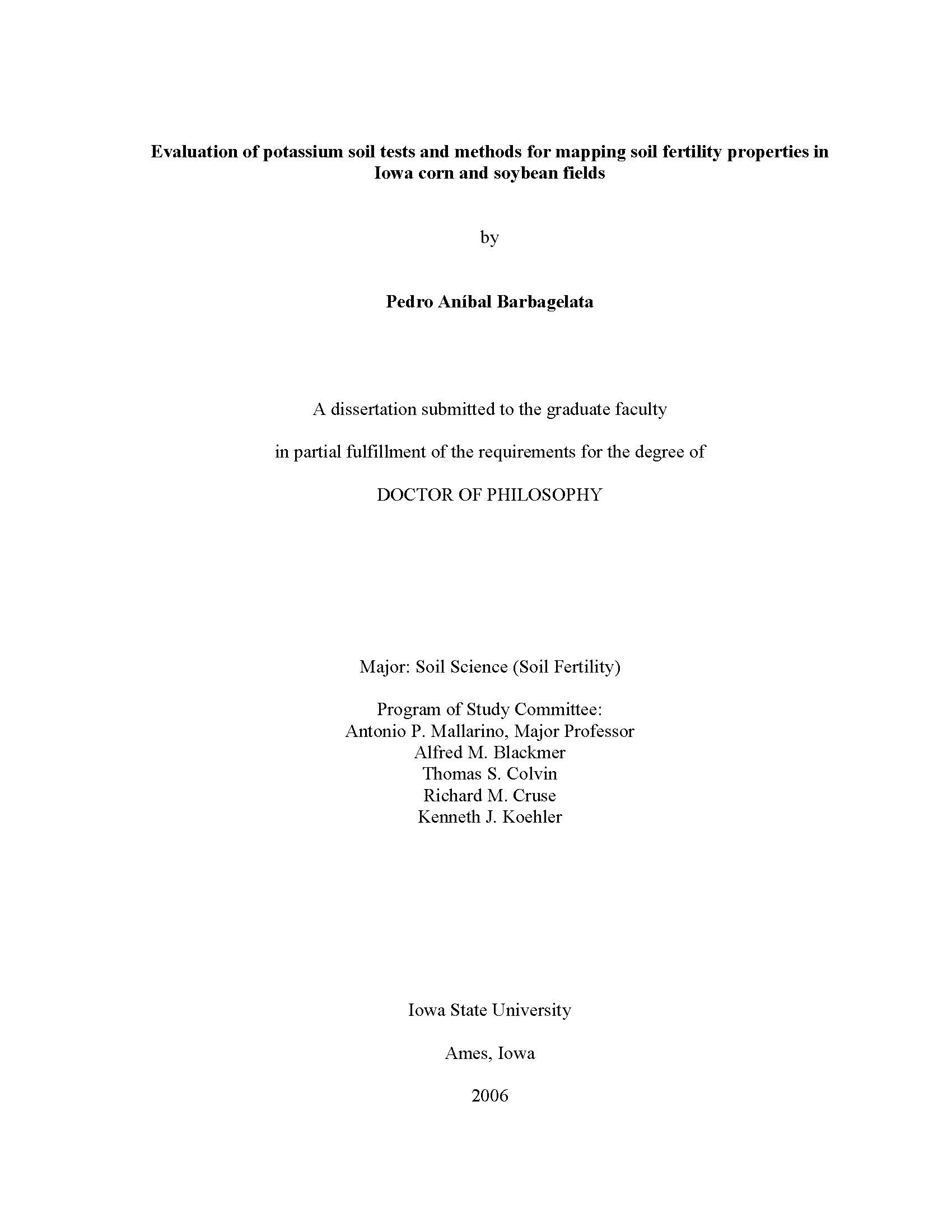Ver ítem
- xmlui.general.dspace_homeCentros Regionales y EEAsCentro Regional Entre RíosEEA ParanáTesisxmlui.ArtifactBrowser.ItemViewer.trail
Evaluation of potassium soil tests and methods for mapping soil fertility properties in Iowa corn and soybean fields
Resumen
Improving the use of soil testing in production agriculture may result in increased nutrient use efficiency and profitability. Three studies were conducted in Iowa with this general goal. One study assessed the impact of soil sample drying on K extraction and developed field correlations of an ammonium-acetate K test (AA) based on field-moist samples for corn and soybean. Potassium extracted with AA from dried samples was higher than K extracted from
[ver mas...]
Improving the use of soil testing in production agriculture may result in increased nutrient use efficiency and profitability. Three studies were conducted in Iowa with this general goal. One study assessed the impact of soil sample drying on K extraction and developed field correlations of an ammonium-acetate K test (AA) based on field-moist samples for corn and soybean. Potassium extracted with AA from dried samples was higher than K extracted from moist samples. The difference increased with increasing drying temperature, was inversely related to the soil K level, and varied among soil series. The moist AA test correlated better with yield response to fertilization than the common test based on dried samples. Critical concentration ranges defined by Cate-Nelson and linear-plateau models across 64 site-years of data for corn (mg K kg-1, 15 cm depth) were 144-201 and 62-76 for dry and moist tests. Ranges for soybean across 57 site-years were 121-214 and 52-90 mg K kg-1, respectively;A second study compared the efficacy of AA, Mehlich-3, and sodium tetraphenylboron soil K extractants in determining soil K availability for corn and soybean. Mehlich-3 and AA extracted similar amounts of K. Sodium tetraphenylboron extracted K was significantly higher, differences increased with increasing soil K, and decreased as the Ca and Mg to K ratio increased. Mehlich-3 and AA showed similarly poor predictability of crop response to K. The sodium tetraphenylboron test did not improve consistently the predictability of crop response to K. Critical concentration ranges (mg K kg-1, 15 cm depth) for corn across 63 site-years were 133-216, 128-199, and 421-641 for AA, Mehlich-3, and sodium tetraphenylboron tests. Ranges for soybean across 54 site-years were 122-191, 114-185, and 473-556 mg K kg-1, respectively;A third study examined spatial variability of soil fertility properties (soil-test P, K, Mg, and pH) using geostatistics and compared inverse distance weighting, ordinary kriging, and universal kriging for data interpolation and mapping. Soil-test variability and its spatial structure varied across nutrients and fields. Universal kriging was the least accurate interpolation method. The results indicated that the sampling density required for effective use of variable-rate technology differs across fields.
[Cerrar]

Director de Tesis
Mallarino, Antonio P.;
Descripción
Tesis para obtener el grado de Philosophical Doctor (PhD), Major: Soil Science, de la Iowa State University, en 2006
Fecha
2006
Editorial
Iowa State University
Formato
pdf
Tipo de documento
tesis doctoral
Palabras Claves
Derechos de acceso
Abierto
 Excepto donde se diga explicitamente, este item se publica bajo la siguiente descripción: Creative Commons Attribution-NonCommercial-ShareAlike 2.5 Unported (CC BY-NC-SA 2.5)
Excepto donde se diga explicitamente, este item se publica bajo la siguiente descripción: Creative Commons Attribution-NonCommercial-ShareAlike 2.5 Unported (CC BY-NC-SA 2.5)


